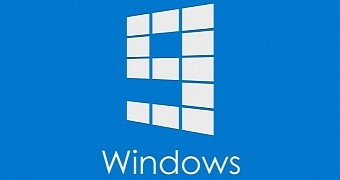Microsoft is already in the middle of a very complex plan to bring more affordable devices running modern Windows to the market, so it’s no surprise that the upcoming Windows 9 operating system is going to be part of this new plan.
The LinkedIn profile of Oleg Krogius (registered account needed), software developer at Microsoft, reveals that the Redmond-based software giant has already started work on making Windows 9 better for low-cost devices, which could be a sign that the company is trying to the make the software run smoother on affordable tablets and PCs.
One of the recent updates to Krogius’ profile reveals that the firm has been working on “adding new disk footprint management logic across Windows 9 devices to optimize low-cost device experience.”
And still, such a plan is not at all surprising, as Microsoft continues its struggle to bring Windows 8.1 devices to the market available at lower prices, that could take on Android units.
Microsoft is also offering Windows 8.1 with Bing free of charge to manufacturers building products which are available for $250 (€180) or less, so in the last few months, several devices that are available for only a couple hundred dollars have hit the shelves.
Toshiba, for example, presented at IFA 2014 the new Encore Mini a 7-inch tablet powered by Windows 8.1 with Bing, which comes at a really surprising price. Expected to arrive in stores sometime next month, the Encore Mini can be yours for only $119 (€90), featuring a display with a resolution of 1024x600px, an Intel quad-core Atom CPU, 1GB of RAM, and 16 GB of storage.
But Microsoft’s intentions to make Windows 9 run on low-cost devices could also be a sign that the upcoming operating system won’t come with overwhelming system requirements. Instead, Windows 9 might be tweaked to work on computers also capable of running Windows 8.1, as rumors has it that Microsoft might be offering the new operating system free of charge to those who have already purchased its predecessor.
These are the system requirements of Windows 8 (note that while Windows 9’s are expected to be pretty much the same, they might vary a little bit):
Processor: 1 gigahertz (GHz) or faster with support for PAE, NX, and SSE2 (more info) RAM: 1 gigabyte (GB) (32-bit) or 2 GB (64-bit) Hard disk space: 16 GB (32-bit) or 20 GB (64-bit) Graphics card: Microsoft DirectX 9 graphics device with WDDM driver.
Microsoft could also come up with a special version of Windows 9 for low-cost devices playing the same role as Windows 8.1 with Bing does for the Windows 8.1 lineup, so some of these specs might be a little bit different.

 14 DAY TRIAL //
14 DAY TRIAL //